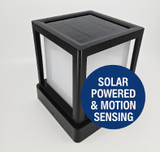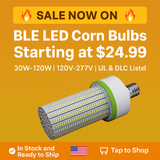Why Hong Kong Is Replacing Its Iconic Neon Lighting
Walking the streets of the culturally rich autonomous territory of Hong Kong, one of the most distinctive features of the city is their colorful neon signs. While the rest of the world is having a debate about induction vs LED and halogen vs fluorescent, Hong Kong's citizens are struggling with the slow but steady replacement of their iconic neon with new commercial LED lighting fixtures.
Back in the 1970s, Hong Kong experienced a post-colonial golden age of commerce. Shops were mostly at ground-level, and shopkeepers wanted to lure in customers, so they invested in the neon signs. Many of them ended up being huge and elaborate, as the growing government at the time didn't have any bylaws restricting signage size. Some of the signs even stuck out vertically from the sides of buildings, literally stopping foot traffic in their tracks and making tourists crane their necks skyward for a better look.
The reality is that neon signs use preciously scarce gases AND a lot of energy. It's believed by the United States Department of Energy that switching to LED lighting in the states can practically slash national energy usage in half. Can you imagine the energy conservation possible in Hong Kong with the same LED strategy?
In the decades since the advent of Hong Kong's neon explosion, the Hong Kong Buildings Department has set up codes and restrictions. They cracked down on the estimated 100,000 signs in the city about a decade ago. Each year, they take down hundreds of signs that have been abandoned or aren't up to code. Their hope is that new LED signage will be better managed by owners and stay within regulation.
A few notable places in Hong Kong still proudly display their neon lights, such as the Bank of China Tower, but most neighborhoods have switched over to the energy efficient LED alternatives. Although LEDs are brighter and less expensive to maintain than neon signs, some in Hong Kong mourn the loss of the warm-glowing neon, an art form and short-lived cultural quirk.
In the U.S., these neon fixtures became associated in the early to mid 20th century with immoral places like liquor stores and clubs, so they aren't as ubiquitous in our businesses and public spaces. American culture has pretty readily accepted LED technology. Still, the story of Hong Kong shows how culture can affect the fate of technology.
Recent Posts
-
How Long Will Solar Powered Lighting Operate in the Rain?
How Solar Light Fixtures Can Run for 10 Rainy Days If you’ve ever wondered how a Commercial solar li …Jul 30th 2025 -
Spotlight - The IL-SPG54 Smart Solar Walkway Light: Where Performance Meets Simplicity
Introducing the IL-SPG54 Smart Solar Walkway Light: Where Performance Meets Simplicity When it comes …Jun 16th 2025 -
Corn Bulb Sale - While supplies last!
⚡ Limited Time Sale – BLE Series Corn Lamps Starting at $24.99! Stock up now while supplies last – p …Jun 11th 2025






